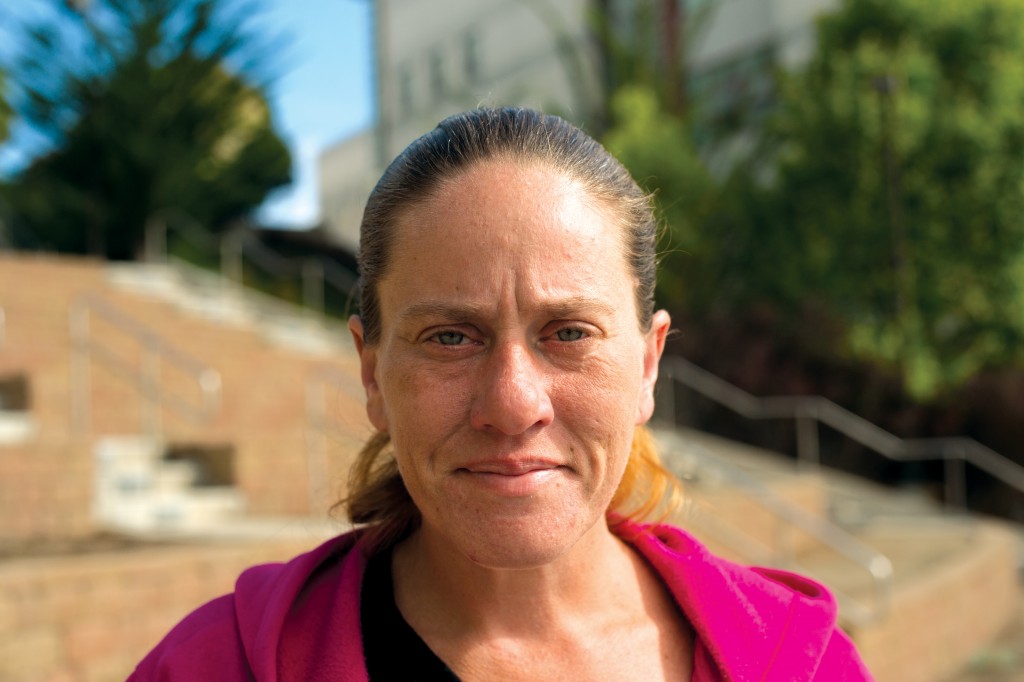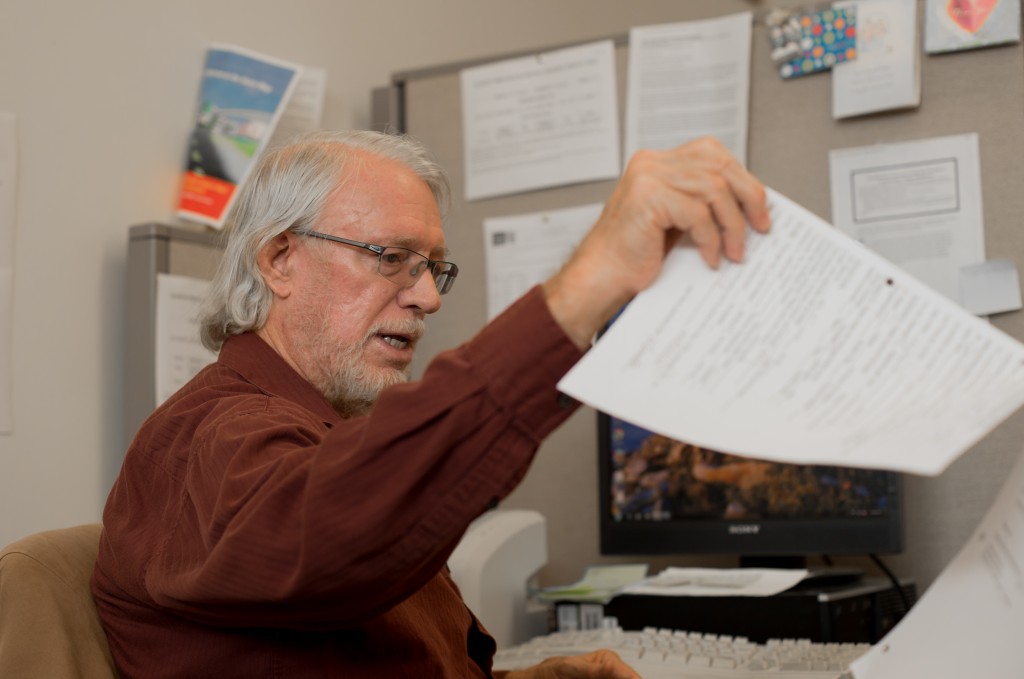HARTS: An Essential Resource to Homeless

(Photo by Otto Pippenger/The Guardsman)
By Marco Siler-Gonzales/News Editor and Otto Pippenger/Staff writer
While roughly 7000 homeless people are living in San Francisco, a small team of students and faculty at City College have helped hundreds of homeless students enroll in classes each year.
The on-campus service Homeless At-Risk Transitional Students Programs (HARTS) currently serves 134 homeless students, and program director Chris Shaeffer said they expect to serve 150 or more by the end of the semester.
Lisa Welch was only able to attend one class at the start of fall semester before she was diagnosed with cancer. Welch, who has been homeless in San Francisco for the past six months, feared she would not be able to continue the semester until she found HARTS.
HARTS advised Welch to enroll in late start classes, along with providing her food and book vouchers for the semester. “I thought it was over for me. I missed the first two weeks of school,” Welch said. “But then someone told me about the HARTS program, and they encouraged me to take late start classes to finish out the semester.”
Services provided by HARTS are funded mainly through Associated Students at City College. The district funds a $180 food voucher for each HARTS student to use throughout the semester.
The City of San Francisco funds public transit passes exclusively for disabled students in the HARTS program.
Computers and second hand clothing are also available at the HARTS office in the Martin Luther King Center room B on the first floor of the Student Union building.
HARTS Statistics
In a report released by HARTS covering the 2013-14 school year, Shaeffer noted the program is serving as many as 250 students at a time on a budget created in 1998 when HARTS was only serving 56 students.
According to the report, HARTS is continually gaining students, who are shifting toward a younger demographic.

Shaeffer’s report lists 44 separate agencies and organizations that regularly refer homeless students to HARTS. Shaeffer wants to expand the program’s office hours from 20 to 28 hours.
“I believe it is reasonable to consider this proposition in order to provide adequate coverage for the program and service to its students,” Shaeffer said.
Roots of HARTS
HARTS has provided services for homeless students since the program was first established at City College in 1992 by John O’Brian, a homeless veteran.
When O’Brian introduced his idea for the program to the Board of Governors in 1990, board member Chuck Ayala set up a task force of city, county and community college constituents to investigate issues of homelessness among the City College populace.
Shaeffer, a member of the task force, became the director when the program was implemented. “I had been working for ten years in the county jail before that, so they thought I might be able to deal with some of the problems our students have,” Shaeffer said.
Homelessness at Large
This fall, Senator Mark Leno authored a senate bill (SB 252) that would prohibit the Department of Education and academic testing companies from charging homeless youth for GED high school exit exams.
“Homeless youth face impossible barriers that make it difficult to graduate from high school, and yet we make it even more challenging for them to receive a diploma at a later date,” Senator Leno said in a press release on Sept. 3.
Fees for these tests can range from $150-$200, a price too high for many homeless youth. Before Shaeffer headed the HARTS program, he taught GED programs at City College’s Southeast center, where the students could pay a reduced fee for the classes but not the tests.
“Why make life more difficult when it’s difficult enough? Their parents don’t have the money otherwise they wouldn’t be homeless. They can’t get financial aid without a GED or high school diploma,” Shaeffer said.
“Homeless youth face impossible barriers that make it difficult to graduate from high school.”
– Senator Leno
According to Leno’s press release, nearly 270,000 students experienced homelessness in the 2012-13 school year.
Housing
HARTS isn’t able to provide direct services for temporary housing, but HARTS students who work at the office, like Deondra Trumbo, are well-connected with housing agencies throughout the city.
“I know a lot of other people in non-profits that can help where we can’t help,” Trumbo said. “HARTS really doesn’t do much with housing, but I know three or four housing specialists that students can go to in order to start the process faster rather than sitting out on the streets.”
Welch, 40, currently lives in a tent with her boyfriend. They plan to enter housing through the Navigation Center, a program located at 1950 Mission St. that houses homeless partners temporarily until they can help them transfer to permanent housing.
“It inspires me to see students like Deondra, because she was once where I am, and she was able to get housing. ” Welch said.
Welch plans to pursue a degree in business and management through City College. She begins radiation therapy this month.
Contact a reporter
Send an email to: Marco Siler-Gonzales
Send an email to: Otto Pippenger

Comments are closed.